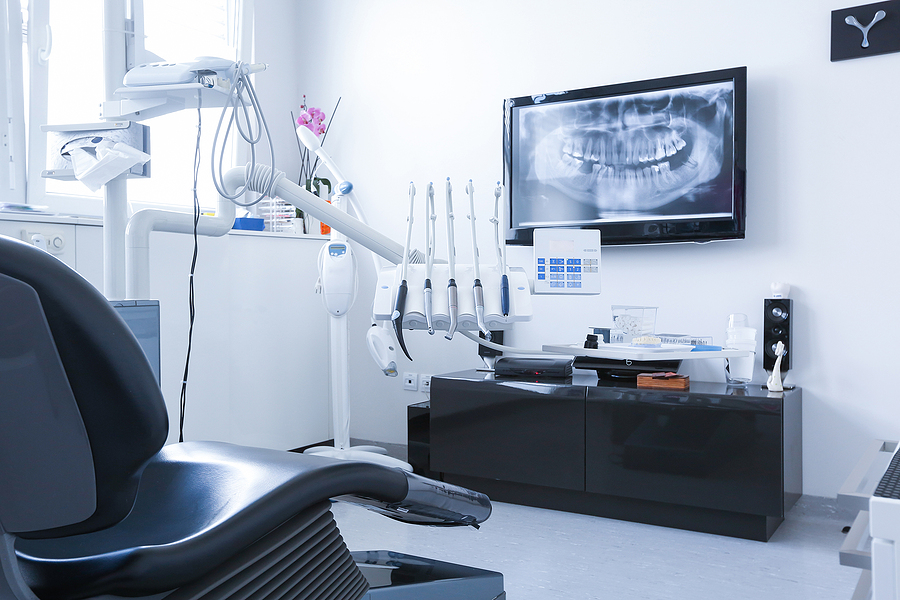IS A BONE GRAFT THE ANSWER TO YOUR PERIODONTAL DISEASE?
Posted by OC ADVANCED PERIODONTICS on Nov 1 2018, 03:22 AM

Periodontal (gum) disease is the number one cause of bone loss in the mouth. If you are experiencing gum disease, you can have chronic bacterial infections that impact your gum tissue as well as the supportive bone material underneath. Once plaque (the sticky bacterial film in the mouth) reaches beneath the gum line, it creates toxins that inflame the gums as the body responds. When this happens, eventually the gum tissue and the bone material that support your teeth will deteriorate, especially once gum pockets are formed and the gums recede from the teeth.
Your body is always creating new bone cells and reabsorbing the old ones, including the bones in your jaw. Whenever you experience tooth loss, the supportive bone begins to reabsorb without regeneration because the natural stimulation for bone growth generated when the teeth chew is lost. In fact, the width of the bone can diminish by 25% in the first year after you lose a tooth.
If your gum disease is severe, the diseased tissue and the bacteria in the mouth can also cause reabsorption. In this situation, our team may recommend a dental bone graft to restore the bone material so it can support a tooth or implant, especially if your gum disease was discovered in the advanced stage. A dental bone graft can effectively replace the lost bone tissue and stimulate the natural growth of the bone.
Bone Graft Treatment
Dental regeneration via a bone graft is where the bone around the lost tooth is regenerated by replacing the missing bone material with bone material from another bone in your body, typically from your chin, pelvis, or third molar area (an autogenous bone graft), and sometimes synthetic bone from a lab or even a from a bone bank (an allograft). Depending on the location in the mouth – as well as how much bone has been lost and whether the bone grafting is done right after tooth removal or if time has passed since you sought treatment – will determine how the bone graft will be done. Bone grafts may be performed to support dental implants, a sinus lift, ridge augmentation, or nerve repositioning.
Procedure
The bone graft is generally done under a local anesthetic unless there are large amounts of bone needing to be grafted. Once the grafting material is harvested or prepared for implantation, a tiny incision is made into your gums so the tissue can be separated from the bone material and the bone grafting material is inserted and the incision closed by suturing. Following the bone graft, you may feel some mild discomfort for a few days, but that can be treated with an anti-inflammatory such as ibuprofen. You may also be prescribed an antibiotic to protect against infection.
If you have incurred tooth loss or have loose teeth from periodontal disease or another type of infection or deterioration, you may benefit from a dental bone graft. Please give our experienced team a call to find out more or to schedule a consultation. We are here to help you restore your healthy smile!
Share On

The Impact of Dental Implants on Jawbone Health & Facial Structure
Dental health is often overlooked, yet it plays a crucial role in our overall well-being. One of the …

How LANAP Helps Save Teeth and Reverse Gum Disease
Gum disease is more common than you'd think, affecting millions of people across the globe. Many often overlook …

Advancements in Dental Technology: Transforming Oral Care
Dental technology has significantly evolved, improving dental treatments' efficiency, precision, and comfort. Whether digital imaging, laser dentistry, or …

The Benefits of Chao Pinhole® Gum Rejuvenation: A Faster, Less Painful Alternative
Are you tired of hiding your smile due to gum recession? If so, you're not alone. Many people …

How LANAP Laser Treatment Can Save Your Smile: The Science Behind It
Are you tired of dealing with the discomfort and embarrassment of gum disease? If so, you're not alone. …
